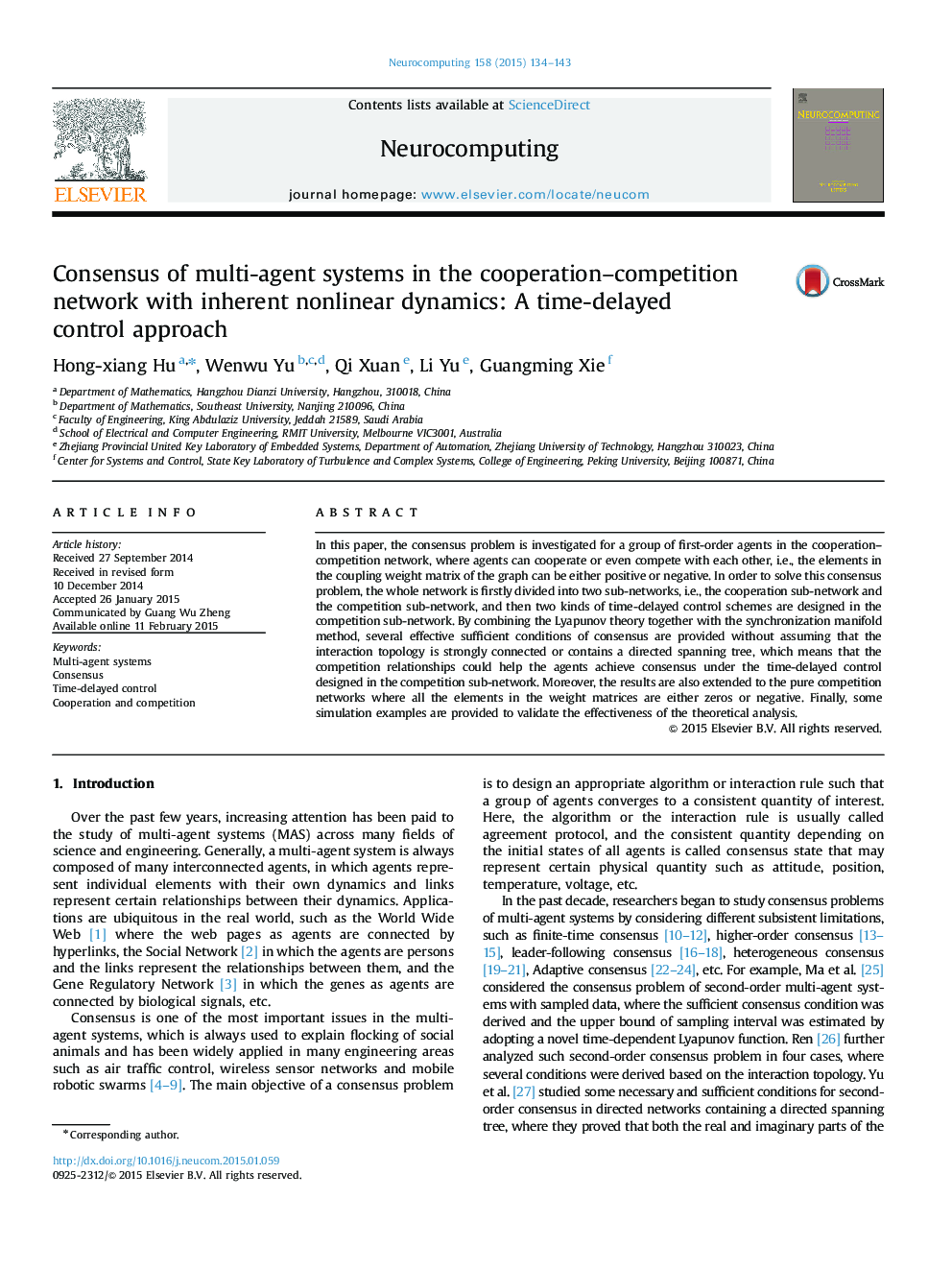| Article ID | Journal | Published Year | Pages | File Type |
|---|---|---|---|---|
| 411955 | Neurocomputing | 2015 | 10 Pages |
In this paper, the consensus problem is investigated for a group of first-order agents in the cooperation–competition network, where agents can cooperate or even compete with each other, i.e., the elements in the coupling weight matrix of the graph can be either positive or negative. In order to solve this consensus problem, the whole network is firstly divided into two sub-networks, i.e., the cooperation sub-network and the competition sub-network, and then two kinds of time-delayed control schemes are designed in the competition sub-network. By combining the Lyapunov theory together with the synchronization manifold method, several effective sufficient conditions of consensus are provided without assuming that the interaction topology is strongly connected or contains a directed spanning tree, which means that the competition relationships could help the agents achieve consensus under the time-delayed control designed in the competition sub-network. Moreover, the results are also extended to the pure competition networks where all the elements in the weight matrices are either zeros or negative. Finally, some simulation examples are provided to validate the effectiveness of the theoretical analysis.
